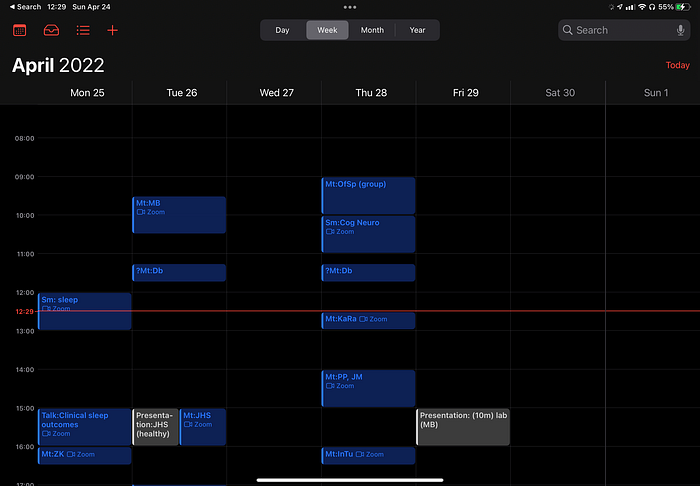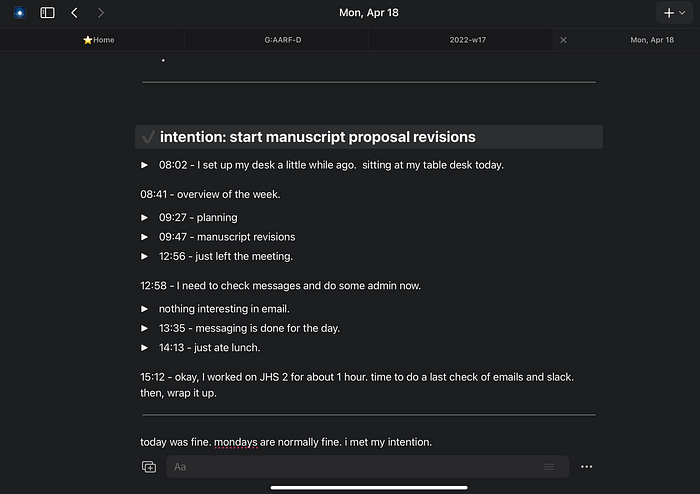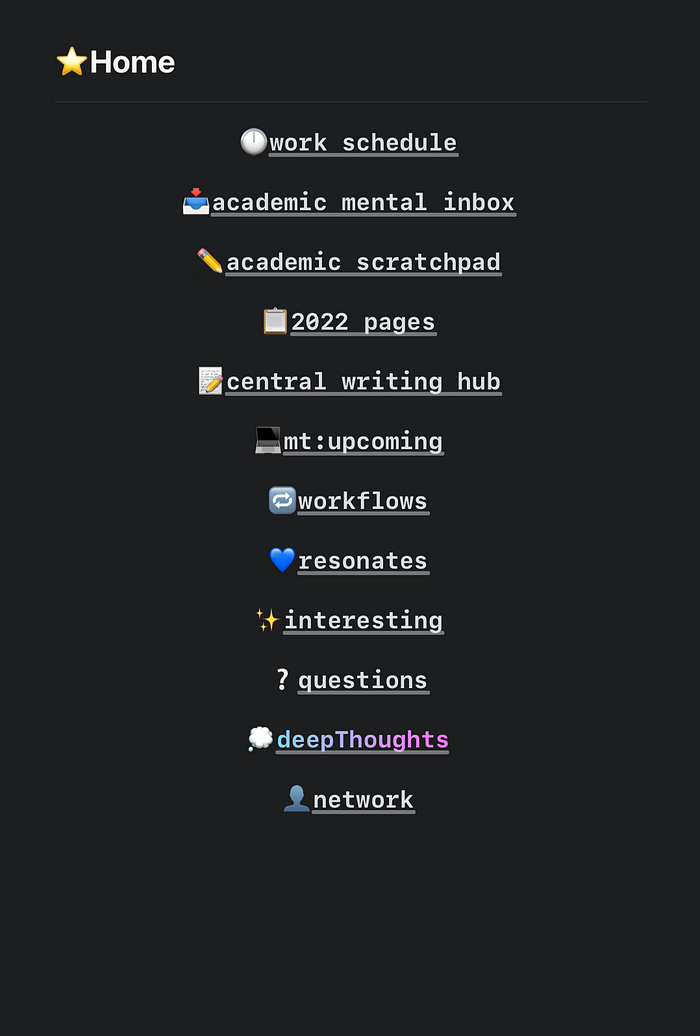Project Management in Craft Docs: Here’s My Experience with a Tight Academic Schedule, The Research Life.
I manage my work schedule with three key tools: my task manager, note-taking app, and calendar.
Without proper maintenance, my task list gets cluttered. I currently work as a postdoctoral research scientist who specializes in sleep research. There will never be enough time to take on every research project, course, or grant proposal. Because of that, we have to prioritize. We have to think about what projects and tasks are the most important and figure out ways to keep tabs on them. Importantly, we also have to find ways to keep ourselves accountable to complete projects and know when we should not take on more. Knowing your limit is simpler when you have a visible account of your active projects and responsibilities. My systems help me to stay on top of the right things at work.
My job as a postdoctoral researcher is a relatively new one (about 8 months). Previously, I wrote about my note-taking system in Craft Docs as an academic research and how it helped me to organize my dissertation project and related graduate work (posted here). A friend told me that postdoctoral research is like working on five dissertations all at once. My postdoctoral research has been more to manage as compared to my graduate research.
As our workloads change, our project management systems should adapt to them. My system has evolved to help maintain organization, accountability, and focus in my work. In this article, I will give an overview of my project management system with Craft Docs and Things 3 and how I use documents in Craft for daily and weekly tracking.
Project Planning with Craft Docs and Things 3
For my project planning, I use a combination of Things 3 and Craft Docs. My daily task management lives in Things. I keep project lists to manage my tasks, start dates, and deadlines in Things. My related notes for those projects and tasks live in Craft. Each project gets its own document in Craft. There, I include a summary of the project, related projects and concepts, deliverables (i.e., what I aim to produce to complete the project), the official due date, and check-in dates. This gives me an overview of the project requirements. With this project page, I can use backlinks to add notes about my project from anywhere else in my academic workspace for Craft Doc, and the backlinks populate at the end of the project page.

Recently, I decided to supplement my task management system with a “deadlines” calendar. Why would I need a calendar in combination with deadlines showing up so many other places? Well, I have a lot of weekly meetings, and it’s important for me to have an overview of what project deadlines (e.g., grants, manuscript reviews) are coming up. This helps me to recognize when I should not schedule additional meetings or take on other projects when deadlines are approaching for ongoing projects.

Tracking projects and holding myself accountable
Honestly, I enjoy planning. It’s likely that you do too. But planning is only a small part of completing a project. To execute what we plan, we must have a way to hold ourselves accountable. Below, I explain my weekly and daily note-taking in Craft Docs that complements my project planning.
The weekly page and review to manage intentions
At the beginning of the work week, I review my “weekly page.” Each week of the year gets its own weekly page. This is where I review my intentions at the end of the week, and how I plan my days throughout the week.
On this weekly page, I keep a maximum of three major goals to aim for by the end of the week. I review this page frequently throughout the week to keep my goals in mind and plan my day around them. On Friday or Saturday, or whenever my week ends, I do a weekly review and plan intentions for the week ahead.

This weekly planning system not only helps me to stay accountable for my active projects. It also helps me to see if I can manage more projects, or if I need to back off and take on less.
One of my favorite uses for the weekly page is threading information with backlinks. I often connect my meetings to the weekly page to prep for an overview of them at the end of the week. I also like to use backlinks as a way to bring things to mind later. For example, if there’s a project that I need to think about soon or someone who I need to plan a meeting with, I can use a backlink to start thinking about it next week or the week after. Having made weekly pages for every week of 2022, I can link a specific idea to any week on any page. This helps me to to bring specific information back to mind during my weekly review.

Although I have manually created these weekly documents in Craft, I hope that Craft offers more pages like this (weekly, monthly, yearly) that are automatically created. Daily notes are automatically populated in Craft, and those are immensely helpful for personal accountability.
Daily notes for intentionality and goal management
My weekly intentions guide my daily schedule. I schedule my tasks to make each day of the work week an incremental step towards completing my weekly goals.
In the daily notes page of Craft Docs, I set a daily intention and log my actions throughout the day and reflect on them using my version of interstitial journaling (I wrote a previous post about who I do this here and the method here).

This helps me to ensure that my actions are in alignment with my intentions. It also illuminates my daily patterns, what areas I’m doing well with, and what may need revision or improvements.
The home page for organized navigation

The home page in Craft Docs supports my project management system, as it helps me to keep my most important notes easily accessible. For example, my research projects often involve manuscript writing. The central writing hub gives me an overview of each status of my manuscripts, e.g., under review, in preparation, or published. This home page document allows for easy navigation through my most referenced notes.
Balancing project accountability and project overload
My schedule for academic research can easily become overloaded if I don’t closely manage it. My current project management system is comprised of setting project deadlines and using weekly and daily planning to hold myself accountable. It also keeps me aware of when my schedule is saturated. Part of project management is knowing when to stop taking on new things to avoid feeling overwhelmed. My notes in Craft Docs, in combination with tasks in Things 3 (and a dash of my calendar), help me to see where I’m at, where I’m going, and if adjustments need to be made.
If you found value in this post and want to say thanks, here are a few ways to support the blog:
- Leave a comment for further discussion.
- Chat with me directly and send feedback, questions, or article requests to emily.c.hokett@gmail.com
- Join Medium and my email list for regular posts (~2x per month, never spam, no ads).
- Buy me a tea🍵 to support the maintenance of the blog.
Originally published at https://www.emilyhokett.blog on May 7, 2022.
